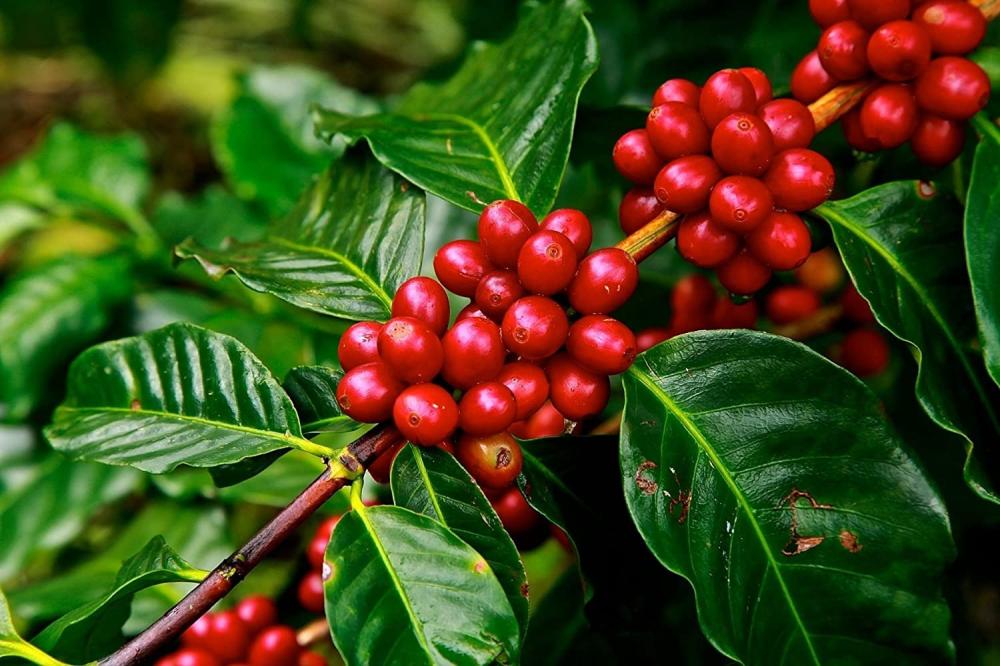Coffee is one of the most widely consumed beverages in the world, with a long and complex history reflecting the diversity of cultures and their methods of preparation. With the evolution of the coffee industry, the term "specialty coffee" has emerged as one of the most important trends distinguishing high-quality coffee from other types. The term "specialty coffee" refers to coffee that has been carefully processed, from cultivation to harvest and processing.
The processing of coffee beans is a fundamental step that directly affects the taste and final quality of the coffee. Different processing methods contribute to the emergence of distinct flavors and give the coffee a unique taste ranging from sweetness to bitterness, from acidity to mildness. It can be said that processing is an art in itself, requiring precise knowledge and perfect timing.
Specialty coffee processing methods vary widely, with different techniques used depending on the coffee variety, the climate and environment in which it was grown, and the experience and traditions of the farmers. The most prominent of these methods are dry processing, wet processing, and semi-dry processing, each of which has its own impact on the characteristics of the final coffee.
What is specialty coffee?
Specialty coffee is a type of coffee that is distinguished by its high quality, carefully selected in terms of cultivation, processing, and roasting. Coffee is called "specialty" when it is highly rated (usually 80 points or higher on a 100-point scale according to the International Coffee Laboratories' standards) based on its unique characteristics, including flavor, aroma, aftertaste, and balance.
There are several factors that influence the classification of coffee as specialty, the most important of which are:
- Geographical Origin: Specialty coffee comes from specific regions known for their high-quality soil and environment. Some of the regions known for producing specialty coffee include Ethiopia, Colombia, Kenya, and Honduras.
- Processing: The method of processing coffee beans after harvest plays a significant role in classifying specialty coffee. Processing methods include wet, dry, and semi-dry, which directly impact the flavor and final characteristics of the coffee.
- Roasting: Roasting relies on a specialized technique that can bring out the unique flavors in each specialty coffee. It does not follow traditional roasting, but rather aims to enhance and enhance the qualities of the original coffee beans.
- Tasting: Specialty coffee must be regularly tested by experts through "cupping" sessions, a process in which the coffee's taste is carefully evaluated.
- Sustainable Agriculture: Many specialty coffee farmers use sustainable, environmentally friendly farming methods, which contribute to high quality and the protection of natural resources.
Specialty coffee is not just a popular product among coffee lovers; it is also a reflection of the efforts of farmers and coffee professionals to achieve the highest quality standards, ensuring that every cup of coffee carries a unique story that begins in the field and ends in the cup.
Read also: What are the most popular specialty coffee drinks?
Specialty coffee processing methods
The processing of coffee beans is one of the most important factors affecting the final quality of specialty coffee. Different methods help extract unique flavors from coffee beans, which can range from mild acidity to rich, complex notes. Here, we'll discuss the most prominent specialty coffee processing methods, explaining how each method impacts the coffee's taste and quality:
1. Wet Process
Wet processing is one of the oldest and most popular processing methods, widely used in regions such as Colombia, Kenya, and Indonesia. In this method, the outer shell of the coffee bean is removed before it is dried. Here are the steps for wet processing:
- Harvest: Ripe coffee beans are collected.
- Peeling: The outer peel is removed by a special machine.
- Fermentation: The hulled grains are left with the pulp for 12 to 48 hours to allow the pulp to react with the yeasts and enzymes.
- Drying: After removing the pulp, the beans are dried either in air or under the sun until they reach a certain moisture level.
Results and Flavors: This method helps bring out the acidic notes and balance in the taste. Coffee processed this way often comes out smooth and has a clean, bright flavor.
2. Dry Process (Natural)
Dry processing is one of the oldest traditional methods of coffee processing and is primarily used in arid regions such as Ethiopia and Brazil. In this method, the coffee beans, along with the husk and pulp, are completely dried. Here's how dry processing works:
- Harvest: Ripe coffee beans are collected.
- Drying: Coffee beans are spread out on large surfaces to dry in the sun. This drying process can take several weeks.
- Peeling: After drying, the peel and pulp are removed by special machines.
Results and Flavors: Dry-processed coffee often has rich, complex flavors. These coffees typically have a sweet, fruity flavor with a creamy or heavy character, as well as some earthy or spicy notes.
3. Semi-dry processing (soft dry) – Honey Process
Semi-dry processing, also known as "honey processing," is a hybrid of wet and dry processing, commonly used in some Central American countries, such as Costa Rica. In this method, the outer skin of the coffee bean is removed, but some of the pulp is left attached to the bean during drying. Here's how it's done:
- Harvest: Ripe coffee beans are collected.
- Dehulling: The outer husk is removed, but the inner pulp remains attached to the grain.
- Drying: The grains are dried with the pulp in the sun for a longer period than wet processing.
Results and Flavors: Coffee processed this way combines sweetness and acidic notes, with a mild, delicious taste. It may be less acidic than wet-processed coffee and sweeter than dry-processed coffee.
4. Mechanical treatment (mechanical washed) – Pulped Natural
Mechanical processing is similar to semi-dry processing, but machines are used to remove the pulp from the grain immediately after harvest. This method is used primarily in Brazil and some parts of Latin America. Here are the steps involved in mechanical processing:
- Harvest: The ripe grains are collected.
- De-pulping: Using a machine, the pulp is removed from the grain immediately after harvest.
- Drying: The grains are dried with a thin layer of pulp in the sun or in mechanical dryers.
Results and Flavors: This method produces a sweet-tasting coffee with some acidity, while retaining a hint of fruitiness.
5. Shade Drying
This method is more advanced and relies on the use of natural shade during the drying process. Coffee beans are dried in a shaded environment or in locations where the temperature is lower than direct sunlight, helping to avoid extreme heat.
Results and Flavors: This method helps preserve the coffee's natural flavors, enhancing the delicate taste and complex flavors while reducing the impact of strong acidity.
Read also: Benefits of roasting coffee
Enjoy the luxury of specialty coffee with the best roasters
If you're a specialty coffee lover looking for a luxurious and unique experience, there's nothing better than enjoying the highest quality and flavor offered by the best coffee roasters at Rafah Al-Qahwa . We offer a selection of the finest specialty coffees, distinguished by their high quality and unique roasting methods. From Hound Roastery , famous for producing coffee with a balanced and rich flavor, to Black Knight , known for its roasting quality that highlights the most beautiful natural flavors of the beans, and Riyadh Roastery , a leading name in the specialty coffee industry thanks to its meticulous attention to beneficiary selection and precise roasting.
Each cup of this coffee represents a journey of excellence and luxury, providing you with an unparalleled coffee experience in terms of flavor and freshness. Whether you prefer light and floral coffee or strong and rich, these roasters will find something to suit your taste perfectly. Enjoy a cup of specialty coffee that meets all your expectations and explore a new world of flavors that can only be obtained from the best roasters. Shop now.

